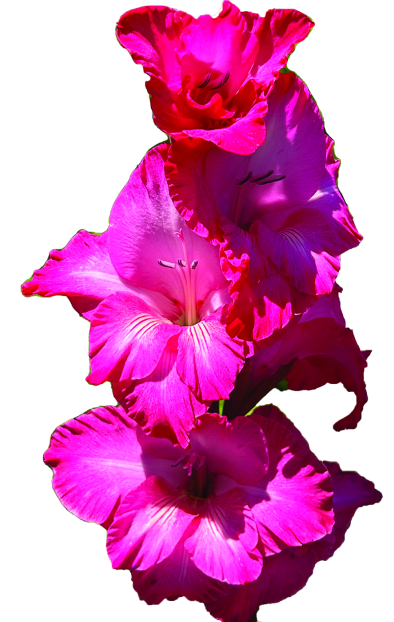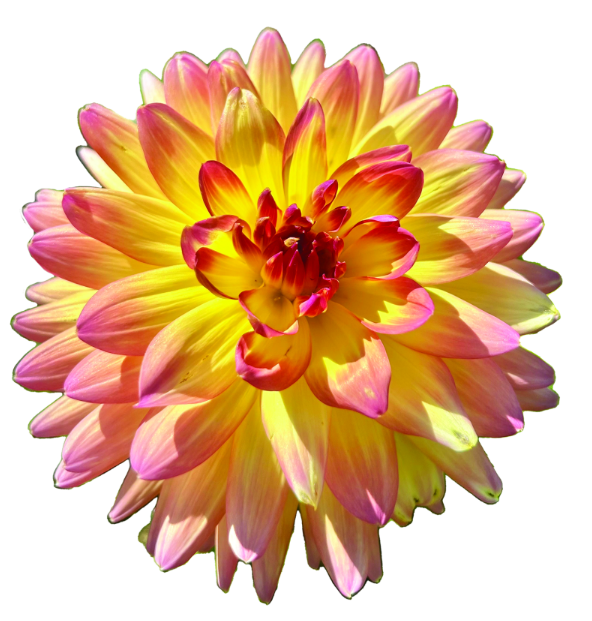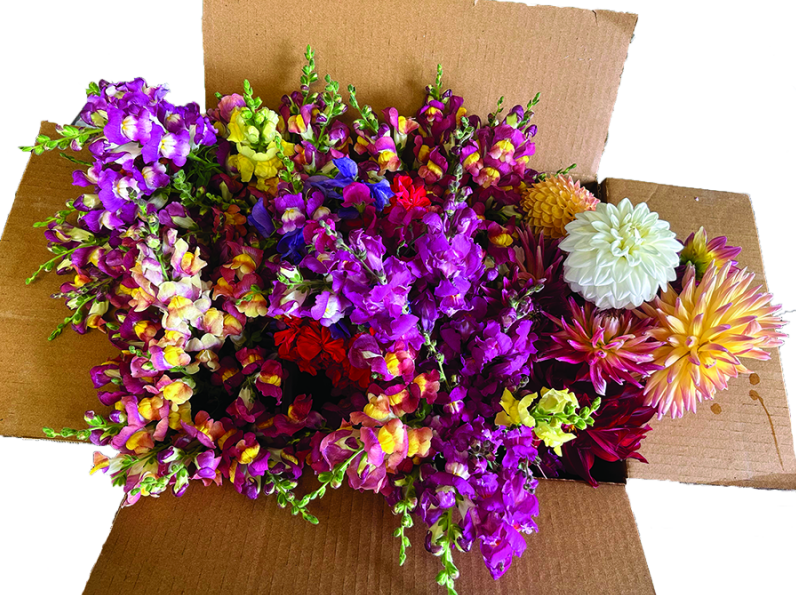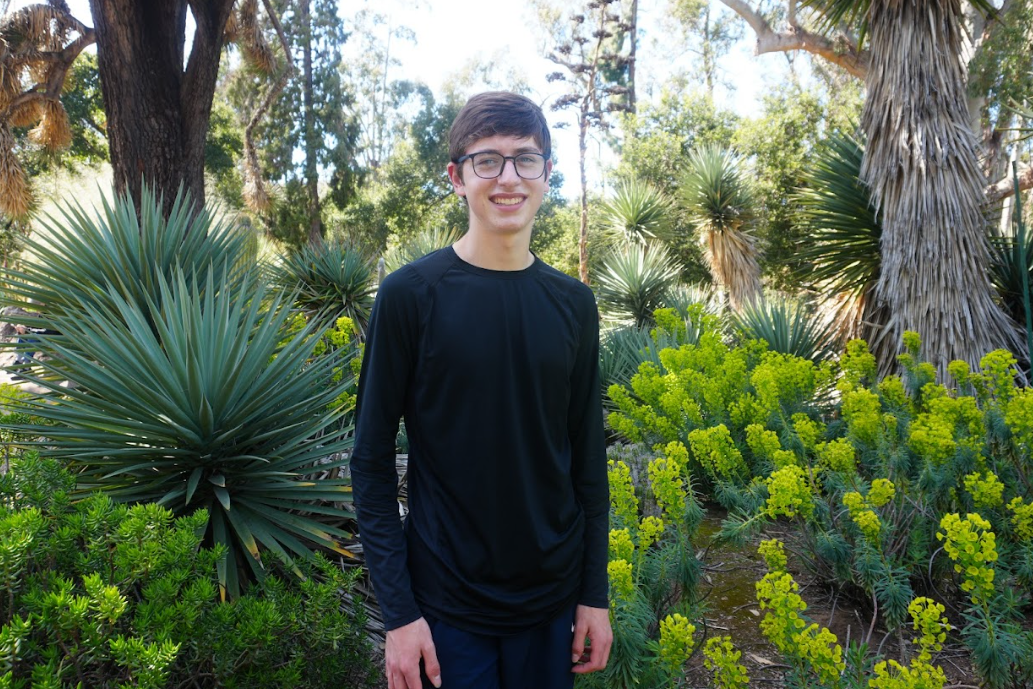In the summer heat, the air is thick with the scent of dahlias and zinnias. Wading through knee-high bursts of color on the Stanford Educational Farm, Palo Alto High School senior Leo Terman gathers handfuls of blossoms, each flower the product of weeks of dedication and consistency.
While others may form a connection to nature by spending time outdoors through camping, journaling or outdoor sports, Terman has found another path — flower arranging.
“There are many ways to [connect with nature], but when you’re actually taking care of something and cultivating it… Terman said. “It’s a little bit more intimate.”
Terman first discovered flower arranging in the summer before his junior year when he quickly became enamored with the activity. It allowed him to interact with his surroundings in a way that helped both the environment and the local community.
“I worked at the Stock Farm at Stanford, where I took care of dahlias, zinnias and other flowers,” Terman said. “I’m not an expert on arranging, but I’ve had two summers of experience just messing with flowers in the farm, trying to learn from the people there.”
Like many students, Terman experimented with other art forms in the past, but he felt a much closer connection to flower arranging than his previous hobbies.
“I did a little bit of art in middle school, and I like to produce music… I played the piano for eight years,” Terman said. “But in terms of art [in general], I mainly like using nature.”
Along with taking care of flowers, Terman enjoys the art of flower arranging, which he believes has the power to convey deeper meanings.

“There’s a lot of different ways you can arrange them; they can be more dramatic or simpler and decorative,” Terman said. “They can definitely reflect how you’re feeling.”
Beyond growing and arranging the flowers, Terman has often delivered them to various members of the Palo Alto community.
“I go to senior centers, and I can bring flowers to people that will improve their lives,” Terman said.
This small act of kindness has proen to be extremely meaningful and symbolic. One interaction he had while gifting a flower arrangement particularly resonated with him and made him realize the impact that flowers could have.
“I [delivered flowers] to one of my neighbors in Palo Alto,” Terman said. “She had a neurodivergent kid and when I brought the flowers over, they were both really happy. It seemed to brighten their day. It was really rewarding to see people enjoying [the flowers].”
Beyond the personal satisfaction of bringing joy to others, Terman advocates for broader student participation through this natural connection.
“People get interested in [the flowers] because they’re very pretty,” Terman said. “It’s a lot more enticing than weeding at Arastradero preserve or a service thing. It’s a small way for people to get involved with [the environment].”
Besides being a simple and beautiful gift, flower arranging helps the farm conduct research and can even result in healthier flowers.
While cutting flowers may seem counterproductive to their well-being, it can actually help them grow through a practice called deadheading.
“Deadheading is taking the flowers that have already opened and [are] starting to wilt and cutting them off from the stems so the stems will start branching out and make new flowers,” Terman said. “Making new flowers gets rid of that energy.”

Terman discovered another aspect of growing flowers was the mutations they can sometimes express. By approaching them from a scientific point of view, he has been able to understand more about nature and his local environment.
“Another interesting [part] is something called wolf petals,” Terman said. “White dahlias aren’t actually white; they’re ivory. You can only get a pure white petal if small RNA is silencing the pigment pathway. There are so many different mutations in the flowers and they all look very interesting.”
Beyond their natural beauty and scientific interest, Terman appreciates the freshness and authenticity that come with homegrown or locally sourced flowers.
“When I sell the flowers over the summer, they help the farm raise money for slug bait and fertilizer,” Terman said. “When you’re cutting the flowers, you’re actually helping them.”
“It’s always better quality when you get them straight out of the field because the ones that you buy in the store are driven there,” Terman said. “Buying from local businesses is always better but when you’re actually picking the flowers, that’s when they’re the freshest.”
Terman finds special meaning in growing the flowers himself, which connects him with every step of the process.
“It’s really nice to see the product of the work that you put in: weeding, taking care of the flowers, watering them,” Terman said. “You’re not just getting them from a store —

it’s something that you actually grow. I think it makes it more personal.”
During the summer, Terman goes to the farm early and spends the morning sharing his passion with the community.
“I [would] go early in the morning, maybe seven a.m. and sometimes with my siblings,” Terman said. “We [would] go to the field and pick all the flowers. Then we loaded them up into buckets, put them in the back of my car and posted them on neighborhood lists.”
Taking care of flowers, arranging them and giving them to people has shaped Terman’s high school experience. He looks back on his time with the flowers with fondness.
“Flowers will always be something that I would look back on and be really happy that I had the opportunity to take care of [them] in that way,” Terman said.
Working with the flowers has been a comfortable haven for Terman to return to. Every student inevitably encounters challenges or obstacles, and it’s small activities like these that help build a sense of familiarity and tranquility.
“Having a routine to go to the field and express myself … was really important for my control over my life,” Terman said. “The farm and the flowers became a place of solace for me and gave me stability.”












